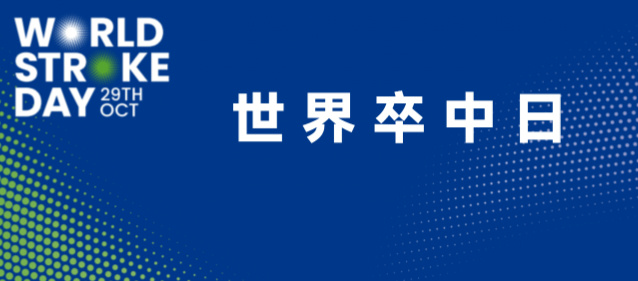BJN:核桃饮食延缓小鼠前列腺肿瘤生长
根据美国加州大学戴维斯分校研究人员在British Journal of Nutrition期刊上发表的一篇研究论文,通过基因编程患上前列腺癌的小鼠如果吃含核桃的食物拥有更小的和更慢生长的肿瘤。
根据美国加州大学戴维斯分校研究人员在British Journal of Nutrition期刊上发表的一篇研究论文,通过基因编程患上前列腺癌的小鼠如果吃含核桃的食物拥有更小的和更慢生长的肿瘤。
加州大学戴维斯分校研究人员和和来自加州大学戴维斯分校西部区域研究中心的同事们评估了小鼠吃不同食物9周、18周和24周后产生的肿瘤大小。他们发现小鼠每天吃相当于人2.4盎司全果核桃的食物与吃匹配核桃食物中的营养物、脂肪水平和脂肪酸谱的大豆油食物的小鼠有着相同的体重增加速度。然而,18 周后,吃核桃的一组小鼠的肿瘤重量将近是吃大豆油食物的小鼠的一半。总之,在吃核桃的小鼠中肿瘤生长速度下降了28%。
人们经常推荐吃低脂肪食物以便降低一个人发展前列腺肿瘤的风险或延缓也已存在的前列腺肿瘤生长,但是加州大学戴维斯分校发表的这项研究提示着拒绝含有高脂肪但是富含Ω-3多元不饱和脂肪、抗氧化剂和其他植物化学物的核桃,可能意味着放弃核桃抗肿瘤生长的保护性效应。
加州大学戴维斯分校营养部门营养研究学家Paul Davis也是加州大学戴维斯分校癌症中心的研究员,同时还是该研究论文的第一作者。他说,“如果附加研究确定核桃在男人中拥有它们在小鼠中的同样效应,那么坚持吃不含能够降低脂肪含量的核桃的食物将意味着前列腺癌症病人可能错过核桃的有益效果。”
前列腺癌症是美国男人患上的第二大最为常见的癌症。每6名男人当中就有一个人将在生命后期被诊断为患上该癌症。但是根据美国国家癌症研究所的数据,相对更少的是,每36名男人当中只有一个人将死于该疾病,因为大多数肿瘤并不从局部位点扩散到他处。
Davis说,“前列腺癌的这些特点使得将核桃加入到饮食中作为阻止前列腺的一部分有吸引性。”
David补充道,已有一些研究暗示核桃可能阻止肿瘤的实际形成。“但是更直接的是,我们的发现提示着吃含有核桃的饮食可能延缓前列腺肿瘤生长,这样该肿瘤将依然保持在前列腺囊内部。如果能够应用到人类,患前列腺癌的男人可能是死于其他原因---很可能是年老。”
研究人员发现没有单个组分产生核桃的有益效果。比如,这项研究发现核桃能够影响与肿瘤生长和代谢相关联的多种信号传导和代谢途径,还发现吃核桃的小鼠在血液中有着较低水平的胰岛素样生长因子(insulin-like growth factor, IGF-1)---一种与前列腺癌强烈相关的蛋白。
吃核桃的小鼠也有着较低水平的低密度脂蛋白胆固醇(不好的胆固醇)。高水平的低密度脂蛋白是一个已经确立的心脏病风险因素,但最近又发现它与肿瘤生长相关联,提示着促进健康心脏的食物同样能够对前列腺癌患者有益。最终,尽管核桃饮食和大豆油饮食有着相似的营养,但是IGF-1和胆固醇的一种主要来源即肝脏在这两种饮食的代谢上存在显著性差别。
该研究得到加州核桃董事会的资助。该董事会当前正在与美国癌症研究所一道资助一项随后的小鼠研究以便证实这些发现,同时进一步探索核桃有益效应的可能原因。(生物谷:towersimper编译)
A high-fat diet containing whole walnuts (Juglans regia) reduces tumour size and growth along with plasma insulin-like growth factor 1 in the transgenic adenocarcinoma of the mouse prostate model
Paul A. Davis, Vihas T. Vasu, Kishorchandra Gohil, Hyunsook Kim, Imran H. Khan Carroll E. Cross and Wallace Yokoyama
Prostate cancer (PCa) has been linked to fat intake, but the effects of both different dietary fat levels and types remain inconsistent and incompletely characterised. The effects on PCa in the transgenic adenocarcinoma of the mouse prostate (TRAMP) cancer model of an elevated fat (20 % of energy as fat) diet containing 155 g of whole walnuts were compared to those of an elevated fat (20 % of energy as soyabean oil) diet with matched macronutrients, tocopherols as well as a low-fat (8 % of energy as soyabean oil) diet. Mice, starting at 8 weeks of age, consumed one of the three different diets ad libitum; and prostates, livers and blood were obtained after 9, 18 or 24 weeks of feeding. No differences were observed in whole animal growth rates in either high-fat (HF) diet group, but prostate tumour weight and growth rate were reduced in the walnut diet group. Walnut diet group prostate weight, plasma insulin-like growth factor 1, resistin and LDL were lower at 18 weeks, while no statistically significant prostate weight differences by diet were seen at 9 or 24 weeks. Multiple metabolites in the livers differed by diet at 9 and 18 weeks. The walnut diet's beneficial effects probably represent the effects of whole walnuts' multiple constituents and not via a specific fatty acid or tocopherols. Moreover, as the two HF diets had dissimilar effects on prostate tumour growth rate and size, and yet had the same total fat and tocopherol composition and content, this suggests that these are not strongly linked to PCa growth.



.jpg)


